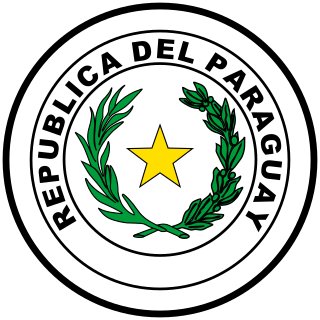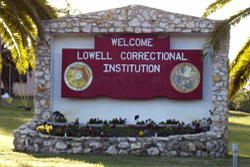Tamworth Correctional Centre, an Australian medium security prison for males, is located in Tamworth, New South Wales, 397 kilometres (247 mi) north of Sydney. The facility is operated by Corrective Services NSW, an agency of the Department of Communities and Justice, of the Government of New South Wales. The Centre detains sentenced and remand prisoners under New South Wales and/or Commonwealth legislation and serves as a reception prison for north–western New South Wales. A periodic detention centre for males was opened in March 1997.

The King's School is an independent Anglican, early learning, primary and secondary day and boarding school for boys, located in North Parramatta in the western suburbs of Sydney, New South Wales, Australia. Founded in 1831, the school is Australia's oldest independent school, and is situated on a 148-hectare (370-acre) suburban campus.

Japan is a constitutional monarchy. The Human Rights Scores Dataverse ranked Japan somewhere in the middle among G7 countries on its human rights performance, below Germany and Canada and above the United Kingdom, France, Italy, and the United States. The Fragile States Index ranked Japan second last in the G7 after the United States on its "Human Rights and Rule of Law" sub-indicator.
The Forde Inquiry (1998–1999), or formally the Commission of Inquiry into Abuse of Children in Queensland Institutions, was a special inquiry into child abuse in the state of Queensland, Australia, presided over by Leneen Forde AC, a former governor of Queensland. Assisting Ms Forde were Dr Jane Thomason and Mr Hans Heilperm.
Winlaton Youth Training Centre was a Government owned and run female youth correctional facility located on 18 acres (73,000 m2) at 186 Springvale Road Nunawading, Victoria, Australia. The facility was designed to accommodate 14- to 18-year-old wards of the state. It opened in 1956 as the Winlaton Juvenile School, and closed in 1993 as the Nunawading Youth Residential Facility. A housing estate now occupies the site.

Technically speaking, Paraguayan law prohibits discrimination on grounds of gender, race, language, disability, or social status, but there is nonetheless widespread discrimination.
The Commission to Inquire into Child Abuse (CICA) was one of a range of measures introduced by the Irish Government to investigate the extent and effects of abuse on children from 1936 onwards. Commencing its work in 1999, it was commonly known in Ireland as the Laffoy Commission after its chair, Justice Mary Laffoy. Laffoy resigned as chair in 2003 and was succeeded by Justice Sean Ryan, with the commission becoming known as the Ryan Commission. It published its final public report, commonly referred to as the Ryan report, in 2009.

The Congregation of Our Lady of Charity of the Good Shepherd, also known as the Sisters of the Good Shepherd, is a Catholic religious order that was founded in 1835 by Mary Euphrasia Pelletier in Angers, France. The religious sisters belong to a Catholic international congregation of religious women dedicated to promoting the welfare of women and girls.
The Parramatta Girls Home, also known as Parramatta Girls Industrial School, Industrial School for Girls, Girls Training School and Girls Training Home, was a state-controlled child-welfare institution located in Parramatta, New South Wales, Australia, which operated from 1887 until 1974.

The Hay Gaol is a heritage-listed former prison and now museum at 355 Church Street, Hay, Hay Shire, New South Wales, Australia. It was an adult prison from 1880 to 1915 and 1930 until 1940, a prisoner-of-war camp during World War II, and a juvenile facility, the Hay Institution for Girls, from 1961 to 1974. It was designed by James Barnet and Colonial Architect and built from 1879 to 1880 by Witcombe Brothers. The site faces Church Street, and is otherwise bounded by Piper, Macauley and Coke Streets, north-east of the town centre. It was added to the New South Wales State Heritage Register on 13 March 2009.

Lowell Correctional Institution is a women's prison in unincorporated Marion County, Florida, north of Ocala, in the unincorporated area of Lowell. A part of the Florida Department of Corrections, it serves as the primary prison for women in the state. Almost 3,000 women are incarcerated in the complex, which includes the Lowell Annex. As of 2015 2,696 women are in the main Lowell CI, making it the largest prison for women in the United States; its prison population became larger than that of the Central California Women's Facility that year.
Catholic sexual abuse cases in Australia, like Catholic Church sexual abuse cases elsewhere, have involved convictions, trials and ongoing investigations into allegations of sex crimes committed by Catholic priests, members of religious orders and other personnel which have come to light in recent decades, along with the growing awareness of sexual abuse within other religious and secular institutions.

Dennis Raymond Ferguson was an Australian sex offender convicted of child sexual abuse. In 1988, he kidnapped and sexually abused three children, and was sentenced to 14 years imprisonment. Ferguson was forced by public hostility and news media attention to relocate his residence on numerous occasions, from various locations in New South Wales and Queensland.

The Salvation Army, Australia Eastern Territory or (AUE) was one of two administrative territories that The Salvation Army was divided into within Australia and covered 2 states and 1 Australian territory on the east coast of the country. The AUE was geographically sub-divided into 2 divisions, under different Divisional Commanders, each reporting directly to the Territorial Commander. Its headquarters was located at 261-265 Chalmers St, Redfern NSW 2016.
The Royal Commission into Institutional Responses to Child Sexual Abuse was a royal commission announced in November 2012 and established in 2013 by the Australian government pursuant to the Royal Commissions Act 1902 to inquire into and report upon responses by institutions to instances and allegations of child sexual abuse in Australia. The establishment of the commission followed revelations of child abusers being moved from place to place instead of their abuse and crimes being reported. There were also revelations that adults failed to try to stop further acts of child abuse. The commission examined the history of abuse in educational institutions, religious groups, sporting organisations, state institutions and youth organisations. The final report of the commission was made public on 15 December 2017.

The Parramatta Female Factory and Institutions Precinct is a heritage-listed conservation site in Parramatta, in the City of Parramatta local government area of New South Wales, Australia. The site was used as the historically significant Parramatta Female Factory from 1821 to 1848. After its closure, the main factory buildings became the basis for the Parramatta Lunatic Asylum, while another section of the site was used for a series of other significant institutions: the Roman Catholic Orphan School (1841–1886), the Parramatta Girls Home (1887–1974), the "Kamballa" and "Taldree" welfare institutions (1974–1980), and the Norma Parker Centre (1980–2008).
Parramatta Girls is a play written by Australian playwright Alana Valentine. It is a dramatised account of the collected testimonies of former inmates of the Parramatta Girls Home, staged as a reunion forty years after the institution closed.

Bidura House, or simply, Bidura, is a heritage-listed former residence, orphanage and office building located at 357 Glebe Point Road in the inner western Sydney suburb of Glebe, New South Wales, Australia. It was designed by Edmund Thomas Blacket and built in 1860. It is also known as Bidura House Group. It was added to the New South Wales State Heritage Register on 28 August 2017.
Newcastle Industrial School for Girls is a defunct Australian girls' school, which was located in 72 Watt Street, Newcastle, New South Wales. On 26 May 1871, the younger girls left the Newcastle Industrial School, and removed to a new institution at Cockatoo Island, named the Biloela Industrial School for Girls. The Newcastle Industrial School for Girls closed in 1887, when all the remaining girls removed to Parramatta Girls School in Parramatta. The building that housed the Newcastle Industrial School for Girls at 72 Watt Street is now the Newcastle Government House.









